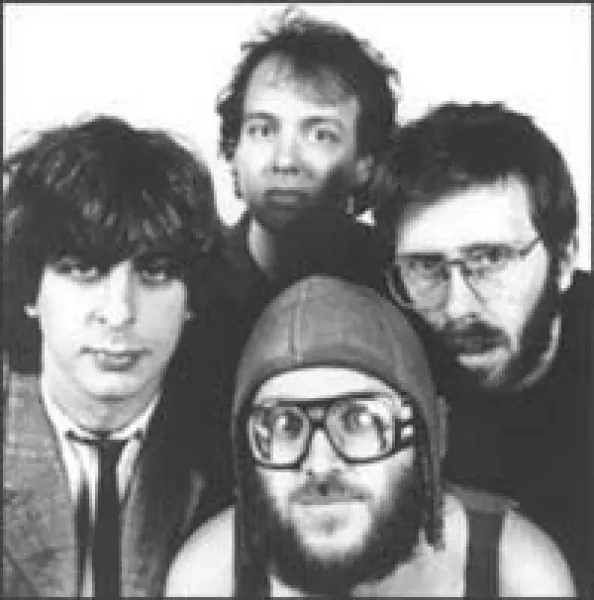
Phish
Top Phish albums
Top Phish lyrics
Phish biography
During the early '90s, Phish emerged as heir to the Grateful Dead's throne. Although their music is somewhat similar to the Dead's -- it's an eclectic, free-form rock & roll encompa**ing folk, jazz, country, bluegra**, and pop -- the group adheres more to jazz-derived improvisation than folk tradition, and they have a looser, goofier attitude. After all, their drummer regularly plays a vacuum during their concerts. Phish's main claim as the inheritors to the Dead's legacy is their approach to their musical career. The band didn't concentrate on albums; they dedicated themselves to live improvisation. Within a few years of their 1988 debut, Phish had become an institution in certain sections of America, particularly college campuses. And their in-concert popularity didn't necessarily translate to huge record sales; their biggest-selling albums usually halted at gold status. Still, Phish were the de facto leaders of the neo-hippie jam band movement, until deciding to go on hiatus in 2000.br /br /Guitarist/vocalist Trey Anastasio, drummer Jon Fishman, and guitarist Jeff Holdsworth formed the band in late 1983 while attending the University of Vermont. After meeting and jamming in their dormitory, the trio posted flyers across campus, recruiting a ba**ist. Mike Gordon answered the advertisement and he was soon added to the original lineup. The group began practicing regularly and soon a**embled a demo tape. In the fall of 1984, Phish began performing off-campus concerts. At this stage in their career, the band was augmented by percussionist Marc Daubert and, occasionally, a vocalist called the Dude of Life. Soon, the group was playing concerts on nearby campuses, including Goddard College's Springfest in 1985. Page McConnell organized the Springfest at Goddard and he became a fan of the band. Later in the year, McConnell convinced the group to add him as a keyboardist. Shortly after McConnell joined Phish, Holdsworth left the group. In the fall of 1986, Anastasio and Fishman transferred to Goddard College.br /br /Early in 1988, Phish recorded Junta, which they sold at their shows as a ca**ette-only release. In 1989, the group played their first tour outside of New England, traveling through the Southeast. Phish also recorded their second album, Lawn Boy, in 1989, although the album wasn't released until the fall of 1990; the record was released on the independent label Absolute A-Go-Go, a subsidiary of Rough Trade. Throughout early 1991, Phish toured America; during the summer, they recorded their third album, as well as a set of sessions with their old friend, the Dude of Life.br /br /Late in August, Rough Trade collapsed, taking Absolute A-Go-Go with it. Phish was left without a record contract, but they were soon signed by Elektra, which released A Picture of Nectar in February of 1992. After the album's release, the group embarked on an extensive national tour. In the summer of 1992, Phish played a handful of shows on the first H.O.R.D.E. tour. Also that summer, Elektra reissued Lawn Boy and Junta. Rift, the band's fourth album and the first they recorded with a producer, appeared in February of 1993. During Phish's 1993 tour, the group sold tickets that were specifically designed for fans taping the concert, a major gesture of goodwill. Hoist, the band's fifth album, was released in 1994; one of its songs, "Down with Disease," became the band's first video and received some airplay on MTV. Hoist sold better than the group's previous albums, which was an indication of how large the group's fan base had gotten. In the fall of 1994, Crimes of the Mind, the album Phish recorded with the Dude of Life in 1991, was released on Elektra Records.br /br /In the summer of 1995, the band released the double live album A Live One, which attempted to definitively capture the Phish concert experience. In early 1996, Trey Anastasio released a free-form jazz side project called Surrender to the Air. In the fall of 1996, Phish released their sixth album, Billy Breathes, which was produced by Steve Lillywhite and garnered the group's best reviews thus far. Slip, Stitch & Pa**, their second live LP, followed in 1997, and the following year, the group resurfaced with the studio effort Story of the Ghost. The six-disc Hampton Comes Alive, capturing four full live sets over the course of two nights, appeared in late 1999 and went gold, a testament to their rabid following. br /br /Phish's popularity only grew during the last half of the '90s, and their ceaseless touring had helped make them indisputably one of the top concert draws in the nation. In the spring of 2000, Phish delivered the pastoral studio effort Farmhouse, which was hailed as one of their finest and tightest to date; they also landed some mainstream exposure thanks to the single "Heavy Things." However, exhausted by touring and separation from their families, Phish decided to take an extended break, announcing a temporary breakup in October 2000. A month later, Elektra reissued The Siket Disc, which was previously available only through mail order; it featured improvisational tracks from the band's 1997 Story of the Ghost sessions. br /br /Each member branched out into different direction with mostly successful results during this period. Anastasio released a series of demos before hooking up with Primus ba**ist Les Claypool and former Police drummer Stewart Copeland for their bizarre Oysterhead project. Despite all the touring he put into these projects, he also released an eponymous solo album during the spring of 2002. Jonathan Fishman worked with his side project Pork Tornado and the touring jazz combo Jazz Mandolin Project. Page McConnell released the first few recordings from his other band, Vida Blue, as well as contributed keyboards to Tenacious D's first record. Mike Gordon did some work with friend and former employer Col. Bruce Hampton and dabbled in film work both in front of and behind the camera. And both Gordon and McConnell worked on Gov't Mule's The Deep End, Vol. 1. br /br /As for the band, Phish was more a part of American culture than ever when they made an appearance on The Simpsons before releasing a ma**ive set of live albums and a DVD in the spring of 2002. By the end of the year, the group bowed to pressure and came back with the announcement that they would begin to play live again starting at the end of December. They played shows through the following year and a half, then decided to officially call it quits in the summer of 2004 after the release of Undermind and the following support tour. This didn't mean, however, that more albums couldn't be released, and the next year their 1995 New Year's Eve concert at Madison Square Gardens came out, followed in 2006 by Live in Brooklyn, which was recorded on June 17, 2004 on Coney Island. ~ Stephen Thomas Erlewine, All Music Guide

